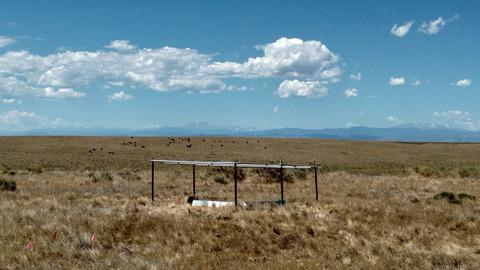Our official English website, www.x-mol.net, welcomes your
feedback! (Note: you will need to create a separate account there.)
Deconstructing precipitation variability: Rainfall event size and timing uniquely alter ecosystem dynamics
Journal of Ecology ( IF 5.3 ) Pub Date : 2021-06-08 , DOI: 10.1111/1365-2745.13724 Robert J. Griffin‐Nolan 1, 2 , Ingrid J. Slette 1 , Alan K. Knapp 1
中文翻译:

解构降水变异性:降水事件的大小和时间独特地改变了生态系统动态
更新日期:2021-06-08
Journal of Ecology ( IF 5.3 ) Pub Date : 2021-06-08 , DOI: 10.1111/1365-2745.13724 Robert J. Griffin‐Nolan 1, 2 , Ingrid J. Slette 1 , Alan K. Knapp 1
Affiliation

|
- Water-limited ecosystems are highly sensitive to not only precipitation amount, but also precipitation pattern, particularly variability in the size and timing of growing season rainfall events. Both rainfall event size and timing are expected to be altered by climate change, but the relative responses of dryland ecosystems to changes in rainfall event size versus timing have not been resolved. Here, we disentangle the effects of these different aspects of precipitation pattern on ecosystem dynamics.
- We experimentally assessed how these two aspects of rainfall variability impacted a semi-arid grassland ecosystem by altering an ambient precipitation pattern to eliminate variability in (a) rainfall event size (all events were made the same size), (b) rainfall event timing (all events were uniformly spaced in time) and (c) both. Total precipitation amount was constant for all treatments. We measured responses of soil moisture, ecosystem carbon flux (e.g. net primary production and soil CO2 flux), plant community composition and physiological responses of the dominant C4 grass, Bouteloua gracilis.
- Removing variability in rainfall event size altered ecosystem dynamics more than a pattern of uniform event timing, but the largest impact occurred when variability in both were removed. Notably, eliminating variability in both event size and timing increased above-ground net primary productivity by 23%, consistent with reduced water stress in the dominant C4 grass, while also reducing seasonal variability in soil CO2 flux by 35%, reflecting lower seasonal variability in soil moisture.
- Synthesis. Unique responses to different aspects of precipitation variability highlight the complexity of predicting how dryland ecosystems will be affected by climate change-induced shifts in rainfall patterns. Our results provide novel support for the key roles of rainfall event size and timing, in addition to total precipitation amount, as determinants of ecosystem function.
中文翻译:

解构降水变异性:降水事件的大小和时间独特地改变了生态系统动态
- 水资源有限的生态系统不仅对降水量高度敏感,而且对降水模式高度敏感,特别是生长季节降雨事件的大小和时间的可变性。预计降雨事件规模和时间都会因气候变化而改变,但旱地生态系统对降雨事件规模随时间变化的相对响应尚未得到解决。在这里,我们解开降水模式的这些不同方面对生态系统动态的影响。
- 我们通过改变环境降水模式以消除(a)降雨事件大小(所有事件的大小相同),(b)降雨事件时间(所有事件的时间间隔均匀)和(c)两者。所有处理的总沉淀量是恒定的。我们测量了土壤水分、生态系统碳通量(例如净初级生产和土壤 CO 2通量)、植物群落组成和优势 C 4草Boutloua gracilis 的生理反应的响应。
- 消除降雨事件大小的可变性改变了生态系统动态,而不是统一事件时间的模式,但最大的影响发生在两者的可变性都被消除时。值得注意的是,消除事件规模和时间的变异性使地上净初级生产力提高了 23%,这与主要 C 4草的水分胁迫降低一致,同时土壤 CO 2通量的季节性变异性降低了 35%,反映了较低的季节性土壤水分的变化。
- 合成。对降水变化不同方面的独特反应凸显了预测气候变化引起的降雨模式变化将如何影响旱地生态系统的复杂性。我们的研究结果为降雨事件大小和时间的关键作用提供了新的支持,除了总降水量之外,作为生态系统功能的决定因素。











































 京公网安备 11010802027423号
京公网安备 11010802027423号